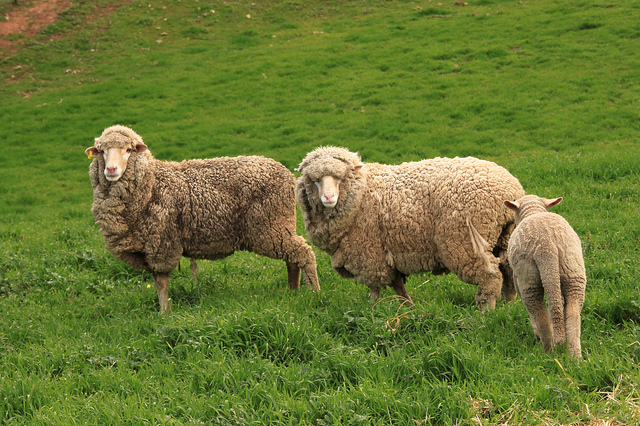What’s the value of soil carbon for livestock grazing?
The role of soil carbon in climate change mitigation has received a lot of attention in Australia. Launched in 2012, the federal government’s Carbon Farming Initiative is the only compliance initiative of its kind in the world that “allows farmers and land managers to earn and sell carbon credits by storing carbon or reducing greenhouse gas emissions on the land.” One of the ways farmers achieve this is by converting crops to pasture, as pasture lands generally contain more carbon than areas that are cropped.
Soil carbon is also associated with more productive farms. Soil with high levels of organic matter generally have better structure, greater water-holding capacity and can provide more nutrients to plants.
As we often spend so much time focused on the climate mitigation benefits of soil carbon, the direct benefit that soil carbon has on farmers and the productivity of their lands can be overlooked.
High carbon soil is valuable – it leads to an increase in long-term pasture growth and can reduce the need for nitrogen fertilisers. Making sure farmers have this knowledge when making decisions not only directly benefits their production, but also will lead to emissions reductions.
To quantify this benefit, my co-authors and I compared the productivity of soils with carbon levels similar to that found in pasture areas (high carbon soils) to that found in and cropped soils (low carbon soils) in south eastern Australia. To investigate the range of benefits soil carbon may provide in different areas, we modelled four soil types in two rainfall zones. The low-rainfall site has an average annual rainfall of 355 mm, and the high-rainfall site has an average annual rainfall of 676 mm per year. On the high-rainfall site we modelled chromosol and vertosol soils, and on the low-rainfall site we modelled calcarosol and sodosol soils.
 High carbon soil is valuable. Image: dannebrog via Flickr
High carbon soil is valuable. Image: dannebrog via Flickr
We found that the high-carbon soils on all sites had increased pasture growth due to more nutrients and water being available to plants. We estimate this benefit is worth from $26 to $95 per hectare per year, depending on characteristics of the soil.
While high carbon soil provided a substantial benefit, achieving these benefits in areas with low carbon soil would be difficult. It would take over 60 years following a switch from cropping to grazing to achieve these productivity benefits. This reinforces the importance of maintaining soil carbon stocks, as it is much easier lost than gained.
We also found that the productivity benefit was driven by increased water availability on the site modelled with low-rainfall and by increased nitrogen availability on the site modelled with high-rainfall. This shows that the most influential benefits, or ecosystem services, provided by soil carbon were dependent on the site characteristics.
We’re also about to publish the impact of these soil carbon scenarios on net greenhouse gas emissions. Although pasture can sequester carbon, methane and nitrous oxide emissions increase when grazing livestock. Thus the net greenhouse balance and overall mitigation potential is uncertain.
In the future we’re planning to identify barriers that stop farm managers from taking soil carbon value into account. Our hope is the research illustrates that productivity benefits of soil carbon provides sufficient justification for maintaining and increasing soil carbon, regardless of the mitigation potential or the risks and costs associated with carbon markets.
DATE
February 3, 2016AUTHOR
Rachelle MeyerSHARE WITH YOUR NETWORK
RELATED POSTS
Spotlight on LMICs – Tired of Breathing in Pollutants? Time for Better Fuel Economy and Vehicle Standards
Future Earth Taipei Holds 2024 Annual Symposium
Spotlight on LMICs – The Future’s Juggernaut: Positioning Research as Anchors for Environmental Health